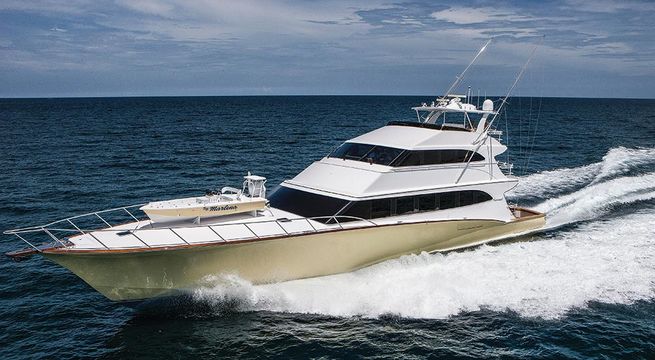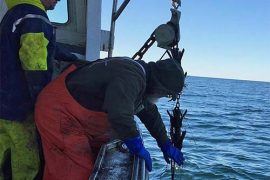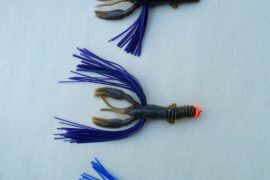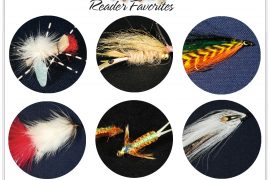
You don’t have to be an old-timer to remember when a 60-footer was considered a big sport-fishing boat — maybe even too big. Many felt bigger boats weren’t maneuverable enough to keep up with a greyhounding blue marlin, or a quadruple-header of sailfish heading for separate points of the compass. Yet today, we see 80-, 90-, and even 100-plus-footers showing up on the water and at tournament weigh-ins with regularity. Boats once considered too big to fish seriously are winning tournaments left and right.

In July 2017, Fa La Me, a 92-foot Viking owned by Frank Rodriguez and captained by Rob Moore, won the Bermuda Triple Crown with the highest point total in the history of the series, also becoming the first-ever three-time Triple Crown winners. Angler Kevin Pento earned a Master Angler ring aboard the 90-foot Bayliss Boatworks Singularis at the 2017 White Marlin Open. The 95-foot Jim Smith Relentless Pursuit took home a win in the wahoo division at the 2017 Blue Marlin Grand Championship, and then third place for tuna in the 2017 Orange Beach Billfish Classic; in that same tournament, the second-place catch-and-release boat was the 92-foot Viking, A Work of Art. The list goes on, with endless tournament results proving beyond a shadow of a doubt that big boats — really big boats — can indeed compete effectively on the tournament circuit.
Does Size Really Matter?
Have technological advances made these monster fishing yachts more fishable? Are there new tactics and techniques that can overcome the downsides to fishing from a large, lumbering platform? John Bayliss, a competitive captain-turned-boatbuilder, has insight from both sides of the coin.
As anglers and captains alike might assume, one of the biggest challenges that come with fishing competitively from a massive sport-fishing machine has always been maneuverability — and this is the key factor each and every captain and builder we spoke with raised. But in this regard, technology has in fact helped overcome the challenge.
“Today’s powerplants have helped tremendously in making these larger boats more nimble,” Bayliss says. “Taking a 150,000-plus-pound boat and aggressively spinning it around on a tripleheader or a wild blue marlin is now possible, especially when you incorporate a hydraulic bow thruster.”
Capt. Mel Matherne, who runs the 105-foot Jim Smith Marlena, points to the exact same factor. “When backing down, the bow thruster can be a big help,” he reports. “Maneuverability is not a problem at all on Marlena, regardless of size. In fact, even boats as big as 105 feet can feel like you’re just handling a really big Ferrari.”
And on Fa La Me, Moore has had a similar experience. “It took a while to get used to it,” he says, “but in truth, the boat is just as agile as a smaller boat that was built 10 years ago.” In the case of the 92-footer he runs, Moore gives much of the credit to Viking. “The Viper steering” — a proprietary system developed specifically for Viking’s larger sport-fishing yachts — “allows me to make turns in a radius that is just as tight as a much smaller boat,” he says.

The builders of these larger boats also point out that advancements in the available powerplants have a lot to do with their ability to go larger. “It’s all about the horsepower,” says Jim Weaver, of Weaver Boatworks, which launched a 90-footer last year and currently has a 97 under construction. “A decade ago, we didn’t have the MTU 2400s or 2600s. On top of that, now we also have better propeller designs and faster throttle response. The delay that used to be in the throttle is gone, and we’ve also got gyrostabilizers, joystick controls, and a lot of different advancements that all play a part in allowing the boats to go bigger.”
Ryan Higgins, factory captain at Viking Yachts, points to horsepower and throttle response as the key factors as well. “Available horsepower is one of the crucial mechanical items needed to keep these big sport-fishing boats competitive,” he explains. “The MTU M91s pushed our initial 74 at a 30-plus-knot cruise. Then the M93 pushed the 82 at a 30-knot cruise. Then came the first set of M96L 2600s in North America, which powered the first 92 Convertible and produced cruise speeds over 30 knots. There’s no delay in the control system, and the acceleration and responsiveness make the 92 maneuver more along the lines of a 60-footer.”
Growing Pains
With the maneuverability issues resolved, sheer size does expose some different issues with fishing competitively from yachts of this length. The size of the crew, for example, needs to grow with the boat. No one we spoke with fished with just a captain and a mate: Three hands are considered the minimum number. Some mentioned bring a fourth aboard for tournament fishing. And the more crew you have running a boat, the more imperative it is that they all work as a team. All of the captains we spoke with stressed the need to get everyone on the same page in the cockpit.
“The biggest thing about running the operation on a big boat like this is that everyone knows and does their job,” says Fa La Me’s Moore. “Everything has to be as organized as possible, and if there’s a problem, it’s almost impossible to play catch-up. It’s sort of like driving a semi through the city: There isn’t much room for error.”
A mistake that does pop up might be a result of overreaching. Naturally, everyone wants to make the most of all the…





